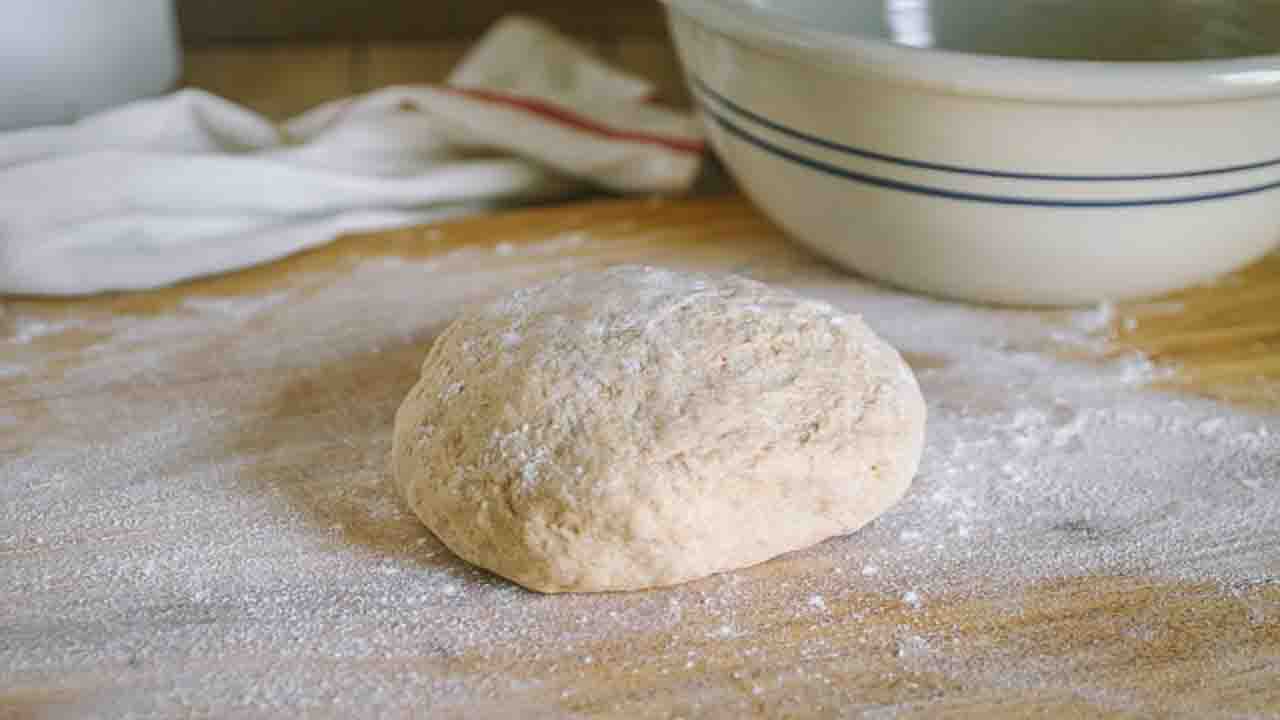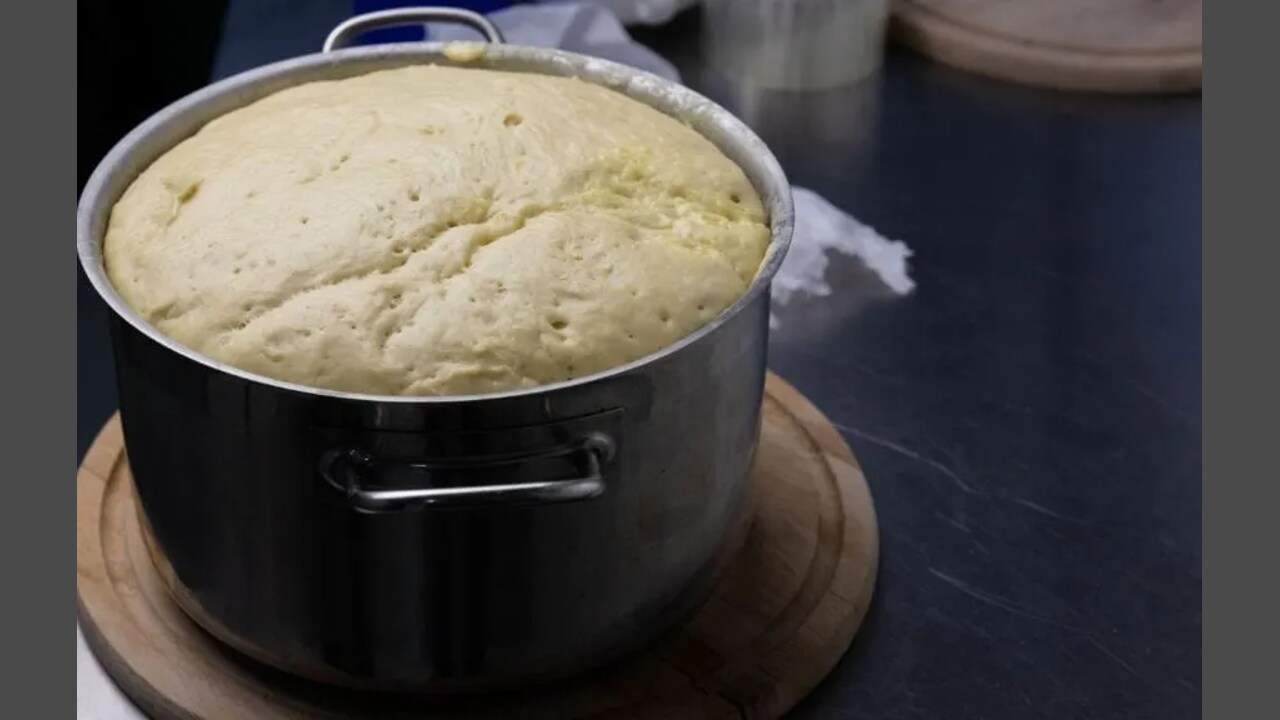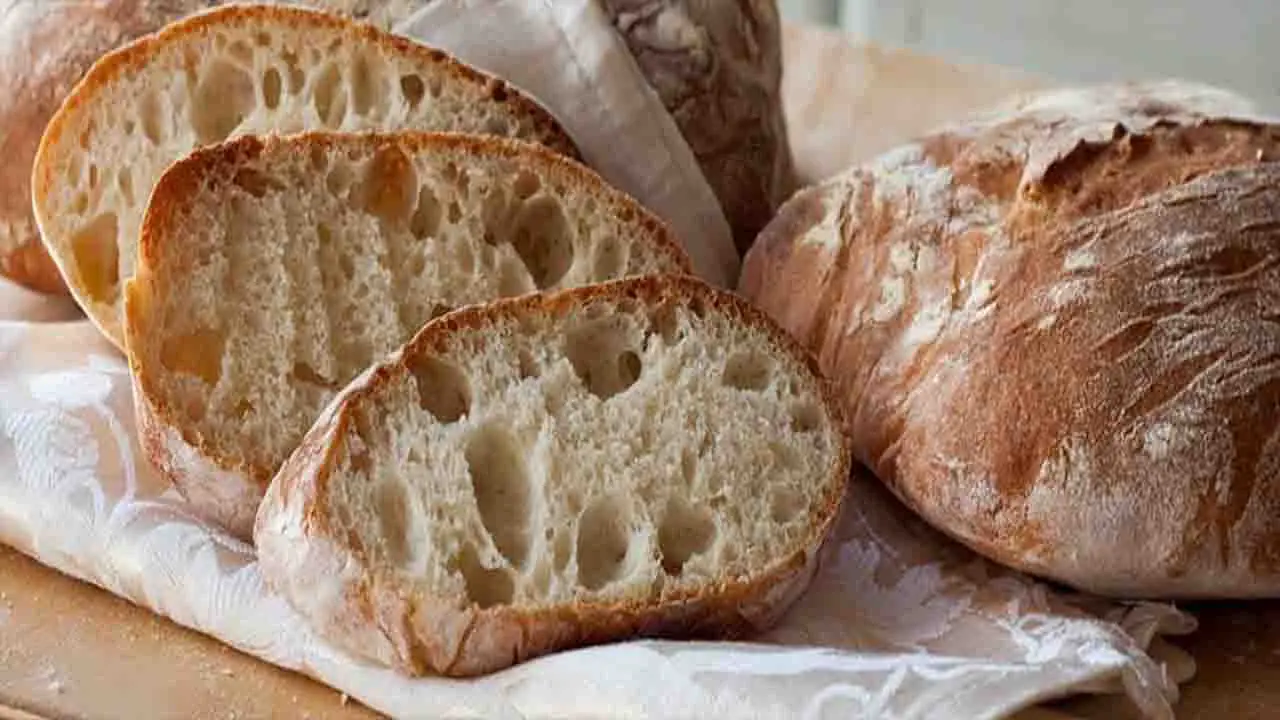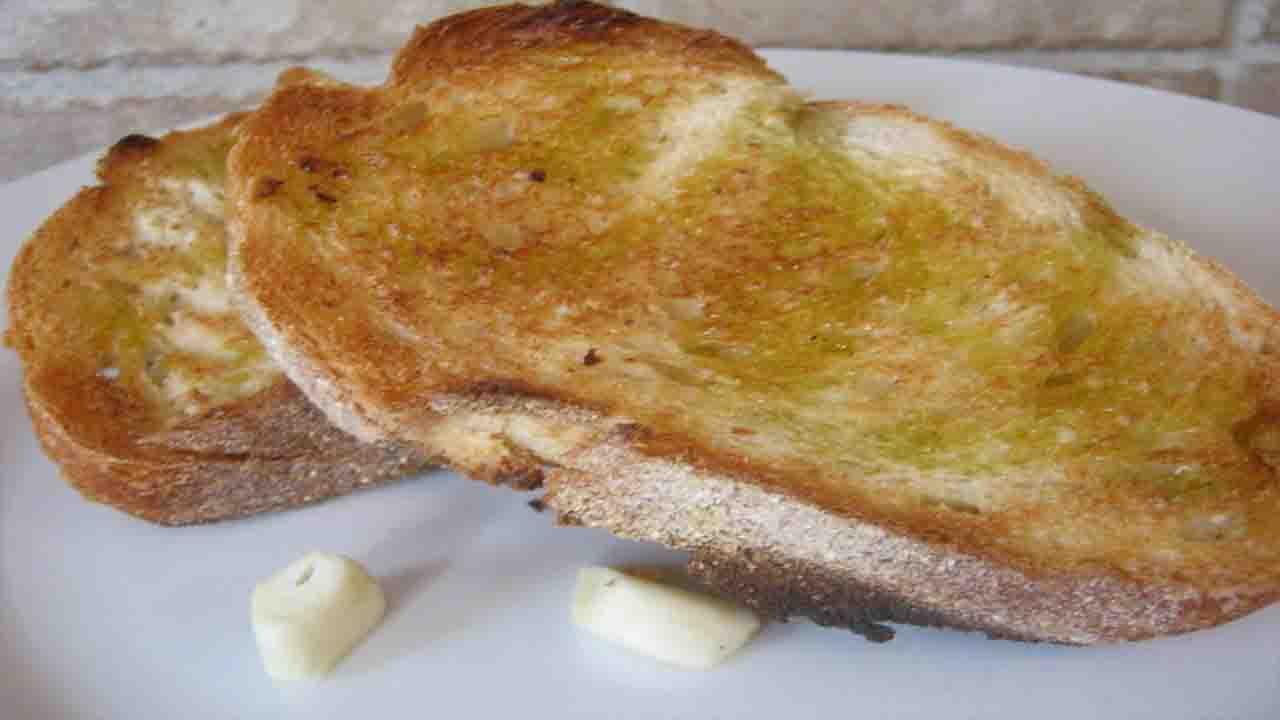Tuscan bread is a beloved traditional Italian bread that hails from the region of Tuscany in Italy. Renowned for its crusty exterior and dense, chewy interior, Tuscan-bread uses basic ingredients such as flour, water, yeast, and salt.
However, what sets it apart from other bread varieties is its distinct flavor profile – it lacks the inclusion of salt. This absence of salt gives Tuscan-bread a unique taste that pairs exceptionally well with various dishes, particularly Tuscan cuisine. Whether used for bruschetta, Panzanella or simply enjoyed with olive oil and balsamic vinegar, Tuscan-bread offers a delightful culinary experience.
Get ready to embark on a journey to uncover Tuscan-bread-making secrets. Here we will dive deep into what exactly Tuscan-bread is and how it differs from other breads. So impress your friends and family with your newfound knowledge and Tuscan-bread-making skills.

Step-By-Step Instructions To Make Tuscan Bread

To make Tuscan bread, combine flour, yeast, and warm water to create a dough. Knead the dough until it becomes smooth and elastic. Allow the dough to rise in a warm place for several hours.
Once it has risen, shape the dough into a loaf and let it rise again. Bake the bread in a hot oven until it turns golden brown. Finally, let the bread cool before slicing and serving. Below we provide details guidelines.
Gather The Necessary Ingredients
To begin making Tuscan bread, gather the main ingredients: flour, water, yeast, and salt. It’s essential to use high-quality, unbleached flour for optimal results. For an authentic touch, consider using a sourdough starter instead of commercial yeast. Additionally, non-iodized salt should preserve the bread’s natural flavor. Remember to measure the ingredients accurately to achieve the perfect texture and taste.
Create The Dough

Combine flour, salt, and yeast in a large bowl. Gradually add water and mix until the dough comes together. Knead the dough for about 10 minutes until it becomes smooth and elastic. Cover the dough and let it rise warmly for about 1-2 hours. Once the dough doubles, it is ready to be shaped and baked.
Knead The Dough
Developing gluten is crucial when making Tuscan- bread as it gives it structure and elasticity. Knead the dough for at least 10 minutes to achieve the desired texture. This process ensures that the dough evenly distributes the ingredients and activates the yeast, allowing the bread to rise properly. After kneading, the dough should feel smooth and elastic, indicating it’s ready for the next step.
Let The Dough Rise

After kneading the dough, cover it and let it rise in a warm place for approximately 2 hours. The dough should double in size during the rising process. A longer rising time can result in a more flavorful and airy bread. Keeping the dough away from drafts is important to ensure proper rising. Press the dough with your fingertips to check if it has risen enough before proceeding to the next step.
Form The Loaves
Once the dough has risen, it can be divided into smaller portions and shaped into either round or oval loaves. These loaves should then be placed onto a baking sheet lined with parchment paper. You can score the top of each loaf using a sharp knife to add decorative touches or promote even baking.
Before baking, allowing the loaves to rest for a final rise is important. The loaves are ready to be enjoyed once baked in a preheated oven until they turn golden brown and produce a hollow sound when tapped on the bottom.
Bake The Loaves

To bake the loaves of Tuscan-bread, preheat your oven to the recommended temperature. Place the shaped loaves on a baking sheet or stone, allowing expansion. Bake them until they turn golden brown and sound hollow when tapped. After removing from the oven, allow the loaves to cool completely on a wire rack before slicing. Indulge in the mouthwatering aroma and flavor of freshly baked Tuscan-bread.
Cool And Serve The Tuscan-Bread

To fully enjoy the flavors and textures of Tuscan-bread, it is important to let it cool completely before slicing or serving. Allowing the bread to cool helps develop a crispy crust while maintaining a soft interior. You should use a bread knife to clean and even slice. In true Tuscan tradition, serve the bread alongside a drizzle of olive oil and balsamic vinegar for an authentic touch. Enjoy this beloved staple of Italian cuisine at room temperature for the perfect experience.
How Does Tuscan-Bread Differ From Other Breads?
People know Tuscan-bread for its distinctive qualities that distinguish it from other breads. It has a unique flavor and longer shelf life because it is made without salt, a notable feature. Its dense texture and chewy crust make it an ideal choice for traditional Tuscan dishes like bruschetta and Panzanella, where the bread serves as a delicious base. Whether enjoyed independently or used in classic recipes, Tuscan-bread adds a special touch to any meal.
Tips And Tricks For Perfect Tuscan-Bread

To achieve the perfect Tuscan-bread, it is essential to begin with premium ingredients such as Italian flour and natural yeast. Following the traditional recipe, which consists of only flour, water, and salt, is crucial. Allowing for a lengthy fermentation period is necessary to develop the desired flavor and texture.
We recommend using a wood-fired oven or a baking stone to attain the characteristic crust and chewy interior. Lastly, mastering proper shaping techniques is essential in creating the iconic round shape Tuscan- bread is popular for.
Troubleshooting Common Issues
If you encounter dense bread, check the activation of the yeast and your kneading technique. For a pale crust, increase the oven temperature and bake for a longer time. If you hear a hollow sound when tapping the bread, it may be under proofed, so increase the proofing time. To achieve an even rise, ensure consistent dough temperature and proper shaping. Adjust the water content for a gummy or wet crumb and bake for longer at a lower temperature.
Serving Suggestions For Tuscan-Bread

Traditionally made with just four ingredients – flour, water, yeast, and salt, Tuscan-bread has a unique flavor that pairs perfectly with savory dishes. Toasted or grilled, it develops a delightful crunch on the outside while maintaining its softness inside.
People commonly use it in traditional Tuscan dishes like bruschetta, panzanella, and ribollita. Another delicious way to enjoy Tuscan-bread is by incorporating it into soups such as pappa al pomodoro or acquacotta, whose dense texture absorbs the flavors of the broth.
Pairing Tuscan-Bread With Other Foods
Tuscan -bread is a versatile accompaniment to many dishes. It pairs perfectly with traditional Italian favorites like Bruschetta and Panzanella. The bread’s dense texture is ideal for dipping into olive oil and balsamic vinegar.
For a classic combination, serve Tuscan-bread with Tuscan soups, such as ribollita or pappa al pomodoro. Those with a sweet tooth can enjoy it with figs and honey. Additionally, Tuscan-bread complements cured meats and cheeses on charcuterie boards. Its ability to enhance the flavors of different foods makes it a must-have addition to any meal.
What Makes Tuscan-Bread A Staple In Italian Cuisine?

Tuscan-bread is renowned for its distinct lack of salt, setting it apart from other types of Italian bread. This unique characteristic perfectly complements the robust flavors found in Tuscan dishes such as soups and stews.
Its dense and chewy texture makes it an ideal accompaniment for dipping into sauces or olive oil, allowing the quality ingredients used in Italian cuisine to shine through. Whether used as a base for bruschetta or enjoyed alone, Tuscan-bread adds an authentic touch to any meal.
Conclusion
To truly experience the essence of Tuscan cuisine, you must indulge in the simplicity and rustic charm of Tuscan bread. This unique bread, with its dense texture and unsalted flavor, has been a staple in Italian cuisine for centuries. Making Tuscan-bread is steeped in tradition and requires patience and skill.
Each stage is crucial in achieving the perfect loaf, from gathering the necessary ingredients to the final step of serving the bread. Whether you pair it with olive oil, use it as a base for bruschetta, or enjoy it alongside hearty soups and stews, Tuscan-bread adds a distinct touch to any meal. So, embrace the secrets of Tuscan-bread making and bring a taste of Italy into your home.
Frequently Asked Questions
1.What Is Special About Tuscan-Bread?
Ans: Tuscan-bread stands out for its unique characteristic – it doesn’t contain salt. This absence allows the flavors of other ingredients to shine and gives the bread a distinctive texture and crust.
2.What Is Known As Tuscan-Bread?
Ans: Tuscan-bread, a traditional Italian bread from Tuscany, stands out with its crunchy crust and chewy interior. Its lack of salt sets it apart, giving it a unique flavor that pairs well with savory dishes.
3.What Is Tuscan-Bread Made Of?
Ans: Tuscan-bread, a staple in Italian cuisine, is made with flour, water, salt, and yeast. Unlike other breads, it doesn’t contain any fat or oil. Using a natural starter called biga is common in the Tuscan-bread-making process. Its thick and crunchy crust surrounds a soft and chewy interior.
4.What Is Tuscan-Bread And Why Is It Good For You?
Ans: People worldwide acclaim Tuscan-bread, a traditional Italian bread, for its unique texture and taste. Made with simple ingredients like flour, water, yeast, and the absence of salt, it offers a healthier option for individuals with specific dietary restrictions.
5.Does Tuscan-Bread Really Work?
Ans: Tuscan-bread, pane toscano, is renowned for its unique texture and flavor. Unlike other breads, the traditional Tuscan recipe excludes salt, giving it a distinct taste. With its hard crust and dense interior, Tuscan-bread is perfect on its own or as a base for dishes like panzanella or bruschetta.
